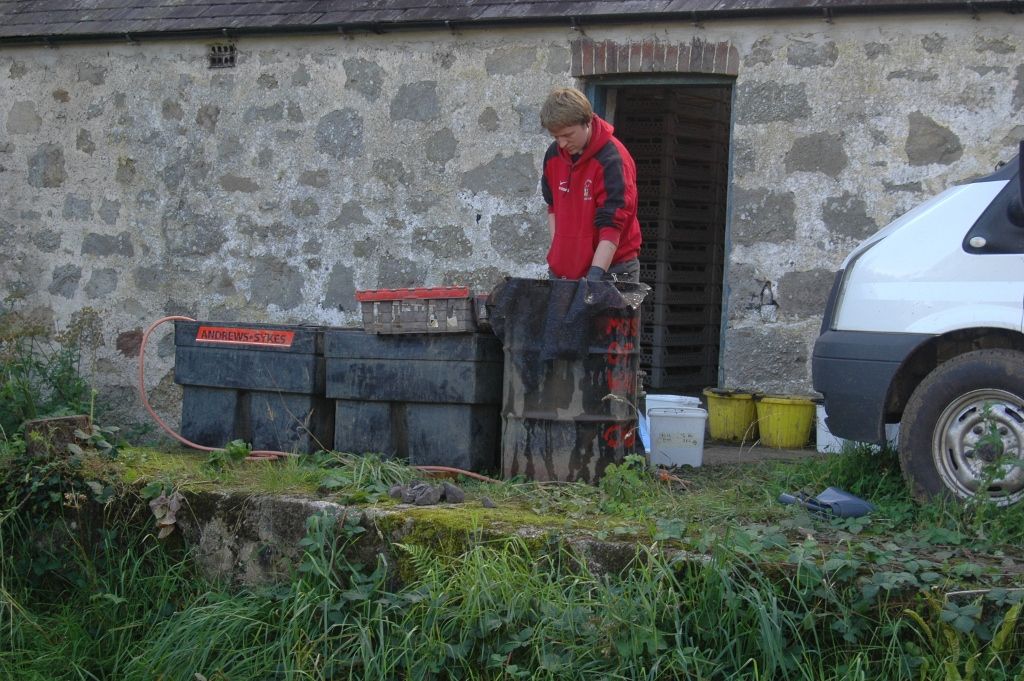Return of the Vikings? 8th September
, 11 Medi 2012
Finds
In the past week finds processing started in earnest, as stratified deposits were by then being dug across most of the site. In the first two weeks keeping on top of the objects coming from the site had only been a part time job: listing and packing the individual metal, pottery and glass finds that had been turning up. With the serious digging of stratified deposits, however, animal bone worth keeping for further study, started to emerge in considerable quantity. The midden (spread of dumped rubbish) in the main trench (Trench AG) was also being systematically sampled, producing tubs of soil needing processing.
The animal bone and the soil samples form the two main strands of the finds processing going on site. The animal bone needs washing and drying before it can be bagged up for future study: when it will hopefully give insights into the diet and farming methods of the inhabitants of the site.
The soil samples are processed in a flotation tank. A sample, held in a fine mesh, has water pumped up through it from below while being agitated and broken up by the hands of the operator. The flow of the water carries off light, organic, components (charcoal, grain, seeds and other plant remains), which is collected in a very fine mesh sieve. Meanwhile the bulk of the soil drops through the mesh into the bottom of the tank leaving the coarse residue of the sample in the mesh. This is mostly small fragments of stone but will hopefully also contain small animal and fish bones that would not otherwise get found. Both the material floated off and the coarse residues are then left to dry and bagged up for later sorting.
Evan Chapman




sylw - (2)
What's the oldest thing you've found?
The oldest things we got this year were some pieces of worked flint which probably date from the Neolithic (about 4000 to 2500 BC).
What was the hardest thing to find?
Probably the hardest things to find on this site are nails and other small bits of iron as they tend to first appear just as small lumps pretty much the same colour as the surrounding soil. The value of metal detectors properly used has certainly been demonstrated in the retrieval of iron objects on this site over the years. We have on occasion been down to less than a handful of soil, with still the metal detector signal being the only indication of the presence of iron.
And what has been your favourite find?
The star find of the year is probably the little lead cross (see blog of 29th August)
Last time you were digging for Vikings we made a model of the site. After this dig, are we going to have to change our model?
There looks as if there may be traces of another building to the west of the spring at the bottom of the slope. There are certainly traces of a paved area in this part of the site
What's the oldest thing you've found?
What was the hardest thing to find?
And what has been your favourite find?
Last time you were digging for Vikings we made a model of the site. After this dig, are we going to have to change our model?
Thank you very much!